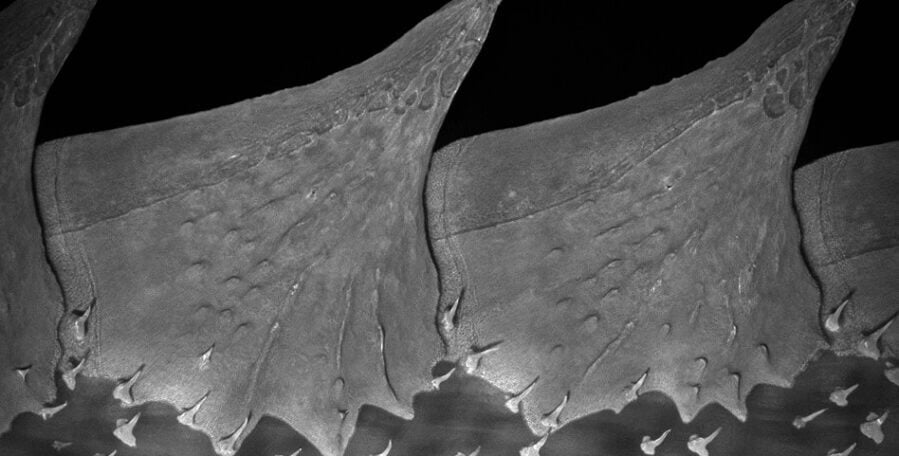New research conducted by Jan Stundl and his colleagues has identified a specific population of stem cells called trunk neural crest cells that are responsible for the development of bony scutes in fish.
The findings, published in the Proceedings of the National Academy of Sciences, shed light on the evolutionary origins of dermal armor in vertebrate fish and challenge previous assumptions about its development.
Stundl and his team focused on sturgeon fish, specifically the sterlet sturgeon (Acipenser ruthenus), which retains characteristics similar to its ancient ancestors. By using fluorescent dye to track the migration of trunk neural crest cells in sturgeon embryos, the researchers observed that these cells were present in the exact locations where the fish’s bony scutes were forming. Genetic signatures associated with osteoblasts, the cells responsible for bone formation, were also found in the fluorescent cells within the developing scutes.
These findings build upon a previous study from 2017 that demonstrated the role of trunk neural crest cells in the formation of dentine-based armor in a type of fish called the little skate. Taken together, the research confirms that trunk neural crest cells contribute to the development of both dentine-based and bone-based armor in vertebrate fish.
The study’s findings have broader implications for evolutionary developmental biology. Jan Stundl emphasizes the importance of studying non-model organisms like sturgeon in order to address fundamental questions in the field. By examining various animals across the tree of life, researchers can gain insights into the evolutionary events that have shaped different species.
The research was supported by funding from Caltech’s Center for Evolutionary Sciences and received contributions from institutions such as Uppsala University, the University of South Bohemia, Charles University, the University of Vienna, and Michigan State University.


